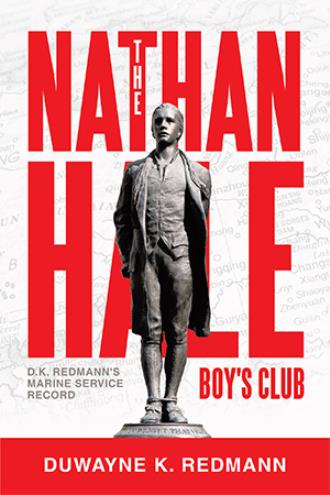Webster’s dictionary defines saga as the story of a historic era. From 1946 to 1956 there was such an era. This is my saga.
On August 14, 1945, the war was over and all the GI’s wanted to go home and get their life back on track. By April 1946, all the service recruiters were out beating the bushes to find replacements. A marine sergeant came to our school and talked to the seniors. He told us we should join up now. We would qualify for a two-year enlistment and be able to obtain the G.I. Bill. We could learn a trade, get help to go to college, travel and see the world. In June many young men joined. Some wanted to be heroes. Others wanted to impress the girls. A few were just one jump ahead of the local sheriff. All over America, in the small towns and big cities alike, many saw their chance. I was one of them.
June, I’m in the Marines and learn many things,
1. Everyone in the military obeys orders. Don’t waste time questioning them. Even the generals and admirals follow the orders. They start in Washington with civilians, the ones that we elect and send there. They have thousands of helpers hired to think up these orders.
2. Then one day I found that there are two worlds. The real world I live in and the secret world I work in. I served under two presidents, Mr. Truman and General Eisenhower.
My saga has the numbers of many planes and the men with whom I flew. These men are real. Many are gone now, but for me, they will always be real. I was very proud of them. Most had families. Perhaps some child or grandchild reading this book will see a name they know. All the ships are real, thousands of men served on them. I hope they and their families will remember. At one time, they were all members of The Nathan Hale Boy’s Club.
Several events prior to 1946 had an impact on the future and must be noted. February 19th -24th of 1945 the Secretary of the Navy, James Forrestal, was aboard the flagship Eldorado, off of Iwo Jima. Here he observed the fire power of the Navy and fighting of the Marines. When he asked how things were going, he was often given pre-invasion briefing information—not facts. On February 23rd he observed the death and destruction of the battle and thought to himself that better intelligence would have saved many Marines. On Feb. 26 the Secretary was back on Guam and then flew on to the Philippines to meet General MacArthur. Back in Washington on March 9th, the War Production Board wondered what to do with all the vast supplies stockpiled all over the world. On April 6th Harry Truman, President of the United States, decides Yalta was a mistake. We must have a tougher policy with Russia. On April 25th, 3:45 PM Germany surrenders. On May 11th Vice Admiral C.M. Cooke said, “There should be no illusion about anything such as a free China. Once the Russians get in, the two or three hundred million in that country would march when the Kremlin ordered.” September 2nd Japan surrendered. On September 5, 1945, Igor Gou Zenko, a Russian cipher clerk working in Ottawa, Canada for Russian military intelligence defected. He turned himself in to the Royal Canadian Mounted Police and requested asylum in Canada. He gave them the names of all the Russian spies in Canada, U.S.A., and England. Many of them held high positions in London and Washington. The Russians also know about our atomic bomb and have the plans to build one. In October-November all three governments work on this problem and in December the arrests begin.
On September 20th by executive order of the president, the OSS was abolished. After the battle for Okinawa the Marines were ordered to China and the first convoy arrived at Taku Bar on Sept. 30th. On October 5th the Marine Air Wing arrived at Tientsin. On Oct. 11, the Marines arrive at Tsingtao. By Nov. 1st, the Marines had 58,209 men in North China. In November 1945 Secretary of State Byrnes is more worried about the poor situation in China, than in any other world problems. On Nov. 27th Ambassador to China General Hurley resigned. General Marshall was appointed special envoy of the President to take his place. In December 1945, the United States has intelligence on the Russian Air Force, their locations and numbers. The Russian land forces are huge, but they are in a state of extreme exhaustion and have been mostly committed to the European front. It is also known that Soviet espionage on the Manhattan Project has given them information on how to build the bomb. The only question now is the length of time needed to acquire the materials and assemble them. President Truman knows the power of the bomb and how one in Russian hands will change the world. In December 1945, the total strength of the Marine Corps was 472,682 officers and enlisted men. The Navy strength was at 3,870,039, the Coast Guard was 169,832 and the Army was 8,291,000.


